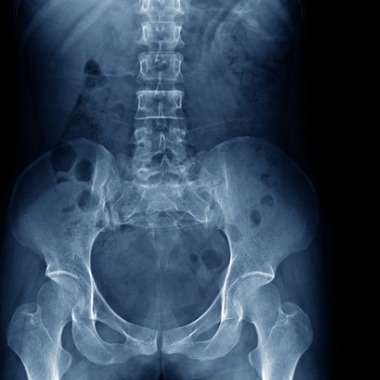Fortin Finger Test: A Diagnostic Tool
The sacroiliac (SI) joint is one of the most critical joints in the body, providing stable support to the upper body and acting as a shock absorber for the spine. When this joint does not function correctly, it can cause significant pain and discomfort. Diagnostic tests are used to help identify problems with the SI joint so they can be adequately treated. The Fortin finger test is one such test that can help diagnose SI joint dysfunction.

What is SI Joint Dysfunction?
The SI joint is situated between the sacrum and iliac bones in the pelvis, sometimes indicated by small back dimples. SI joint dysfunction is a condition that occurs when there is too much or too little movement in the joint, leading to feelings of instability and considerable lower back pain. Other symptoms of this condition include:
- Stiffness
- Trouble walking
- Tightness and tenderness in the hips or buttocks
- Issues with bladder or bowel control
- Reduced range of motion
- Pain worsened by activity
- Radiating numbness
Why is SI Joint Dysfunction Difficult to Diagnose?
Since the primary symptom of SI joint dysfunction is lower back pain, this condition often presents as several other spinal conditions, such as a herniated disc or facet joint syndrome. Due to its nonspecific symptoms, SI joint dysfunction is largely underdiagnosed.
What is the Fortin Finger Test?
The Fortin finger test is a diagnostic tool to help identify SI joint dysfunction. It is performed by doing the following:
- The patient will point to the spot on their body that is most irritable or where they feel a majority of their pain.
- Once the individual points to the location, the physician memorizes the spot and allows the patient to relax.
- Five to ten minutes later, the physician asks the patient again to point to the area where they feel the most pain.
A positive Fortin finger test is determined by when the patient twice identifies their most painful region within one centimeter of the area known as the posterior superior iliac spine. The test is positive because it shows the patient is able to consistently identify the source of pain even though some time has passed. A positive result from the Fortin finger test indicates a strong likelihood that the patient is dealing with an SI joint condition.
The Fortin finger test is considered to be one of the most accurate tests for diagnosing SI joint dysfunction, but your physician may also try other diagnostic tests, such as:
- Sacral thrust test: a short burst of pressure to the sides of your pelvis as you lie on your stomach
- Compression test: downward pressure to your SI joint while you lie on your side
- Distraction test: vertically applied force to both SI joints as you lie on your back
- FABER test: different types of force to your knee bent in a figure-4 position
- Imaging tests: includes X-rays, MRIs, and CT scans
- Diagnostic injection: steroid injection directly into the SI joint
Your physician will also likely conduct a comprehensive physical examination and ask about your medical history.
Have You Been Diagnosed with SI Joint Dysfunction?
If you have recently undergone the Fortin finger test and have been diagnosed with SI joint dysfunction, you may be wondering what your treatment options are. While there are some nonsurgical treatments, like physical therapy or supportive braces, these options may not be effective in the long run.
That is why PainTEQ developed the LinQ SI Joint Stabilization System. The LinQ system is an innovative, minimally invasive treatment that may provide relief from SI joint dysfunction. The procedure involves the insertion of a single LinQ allograft into the SI joint to help patients regain joint stability. As a result, patients can often leave the surgery center the same day of the procedure without any weight-bearing limitations and resume daily activities within a few weeks.
If you are interested in learning more about this revolutionary procedure, contact PainTEQ today to find a provider near you.



